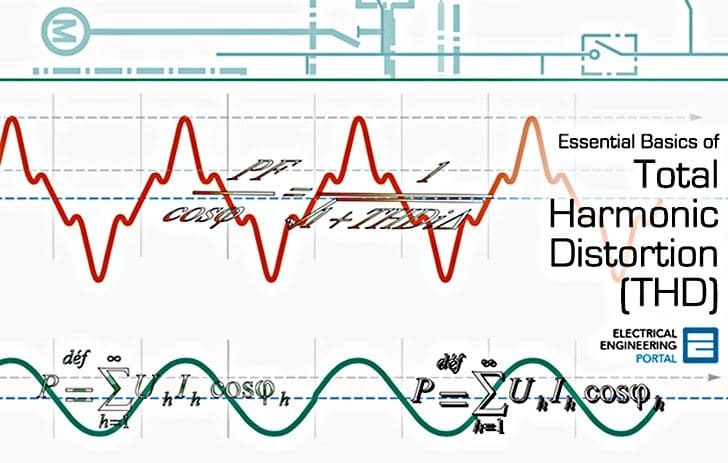
This multiple is called a harmonic of the fundamental, hence the name of this subject matter. When a waveform is ideitical from one cycle to the next, it can be represented as a sum of pure sine waves in which the frequency of each sinusoid is an integer multiple of the fundamental frequency of the distorted wave. Figure 1 illustrates that any periodic, distorted waveform can be expressed as a sum of sinusoids. This is the source of most harmonic distortion in a power system. Increasing the voltage by a few percent may cause the current to double and take on a different waveshape. While the applied voltage is perfectly sinusoidal, the resulting current is distorted. Figure 1 illustrates this concept by the case of a sinusoidal voltage applied to a simple nonlinear resistor in which the voltage and current vary according to the curve shown. A nonlinear device is one in which the current is not proportional to the applied voltage.

Harmonic distortion is caused by nonlinear devices in the power system. These higher order harmonics can also interfere with communication transmission lines since they oscillate at the same frequencies as the transmit frequency. If left unchecked, increased temperatures and interference can greatly shorten the life of electronic equipment and cause damage to power systems. Higher frequency harmonics cause additional core loss in motors which results in excessive heating of the motor core.

Unwanted distortion can increase the current in power systems which results in higher temperatures in neutral conductors and distribution transformers. Harmonic distortion can have detrimental effects on electrical equipment. At about this time, a different type of customer load with electronic power supplies became popular.” This was the beginning of the era of non-linear loads which now include electronics ballasts, computer power supplies, fax machines, arc furnaces and variable frequency drives (VFDs). Gosbell, associated professor, “Harmonic distortion is not generally due to the operation of the power system, and was largely absent before the 1960s. This was due to the lack of non-linear loads before the 1960s. However, the harmonic components were so small that their effects on systems were negligible. Harmonics have existed in power systems since the first generators. Electronic power converters can chop the current into seemingly arbitrary waveforms. At some loads, the current waveforms barely resemble a sine wave. However, the distortion increases closer to the load. In most areas, the voltage found on transmission systems typically has much less than 1% distortion. Industrial users with adjustable speed drives, arc furnaces, induction furnaces, and the like, are much more susceptible to problems stemming from harmonic distortion.Ī good assumption for most utilities in the United States is that the sine wave voltage generated in central power stations is very good. The end user sector suffers more from harmonic problems than the utility sector. In contrast, voltage sags and interruptions are nearly universal to every feeder and represent the most numerous and significant power quality deviations. The forerunners of modern arc lighting were being introduced and were causing quite a stir because of their harmonic content-not unlike the stir caused by electronic power converters in more recent times. Then the primary sources were the transformers and the primary problem was inductive interference with open-wire telephone systems.

Scanning the technical literature of the 1930s and 1940s, one will notice many articles on the subject. Concern over distortion has ebbed and flowed a number of times during the history of ac electric power systems. Harmonic distortion is not a new phenomenon on power systems.


 0 kommentar(er)
0 kommentar(er)
